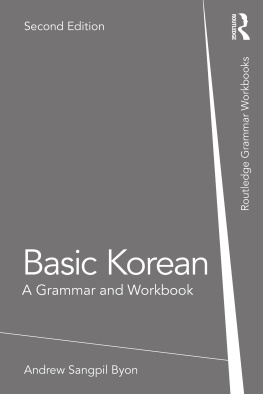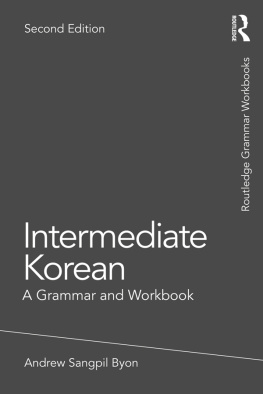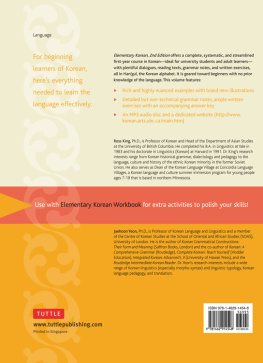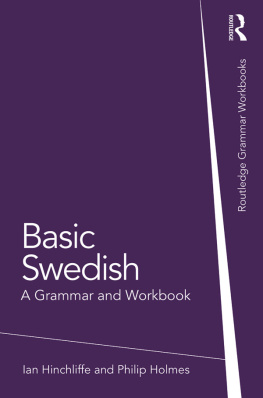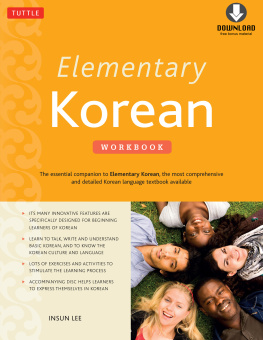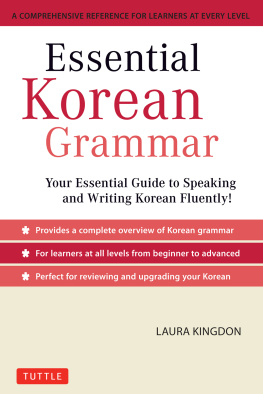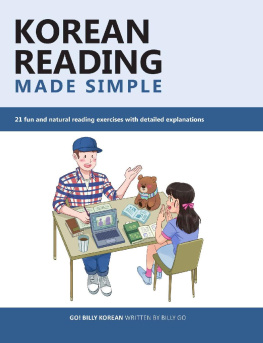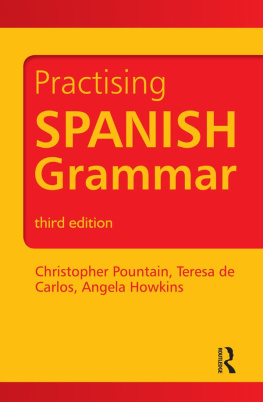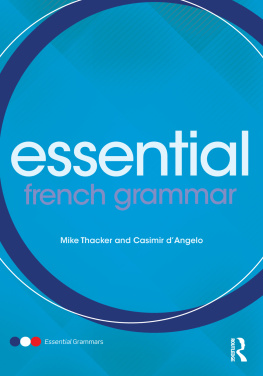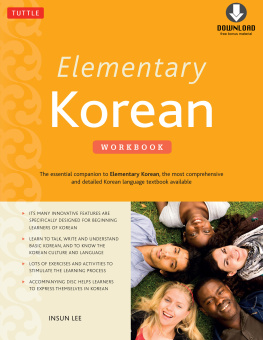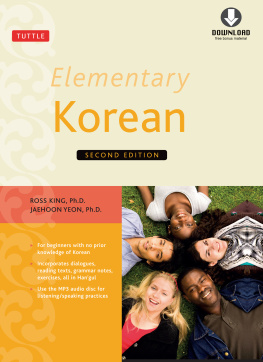Basic Korean
The revised second edition of Basic Korean: A Grammar and Workbook is an accessible reference grammar and workbook in one volume. The text can be used in conjunction with any primary textbook, both as a practice book to reinforce learning and as a reference guide to the basics of Korean grammar.
This book is comprised of 26 units covering the key aspects of Korean grammar students would expect to encounter in their first year of learning the language. Grammatical descriptions are followed by examples and exercises which allow students to reinforce and consolidate their learning. This new edition has been updated and enhanced to include more varied exercises and contemporary vocabulary and dialogues.
Clearly presented and user-friendly, Basic Korean provides readers with the essential tools to express themselves in a wide variety of situations, making it an ideal reference grammar and practice resource for both beginners and students with some knowledge of the language.
Andrew Sangpil Byon is Associate Professor of Korean Studies at the State University of New York at Albany, USA.
Routledge Grammar Workbooks
Other titles available in the Grammar Workbooks series are:
Basic Arabic
Basic Cantonese, 2nd Edition
Intermediate Cantonese, 2nd Edition
Basic Chinese, 2nd Edition
Intermediate Chinese, 2nd Edition
Basic Dutch
Intermediate Dutch
Basic German, 2nd Edition
Intermediate German, 2nd Edition
Basic Irish
Intermediate Irish
Basic Italian
Basic Japanese
Intermediate Japanese
Basic Korean, 2nd Edition
Intermediate Korean
Intensive Basic Latin
Intensive Intermediate Latin
Basic Persian, 2nd Edition
Intermediate Persian
Basic Polish, 2nd Edition
Intermediate Polish
Basic Portuguese
Basic Russian, 2nd Edition
Intermediate Russian, 2nd Edition
Basic Spanish
Intermediate Spanish
Basic Swedish
Intermediate Swedish
Basic Welsh, 2nd Edition
Intermediate Welsh, 2nd Edition
Basic Yiddish
For more information on the series, please visit: www.routledge.com/Grammar-Workbooks/book-series/SE0519
Basic Korean
A Grammar and Workbook
Second edition
Andrew Sangpil Byon

Second edition published 2021
by Routledge
2 Park Square, Milton Park, Abingdon, Oxon, OX14 4RN
and by Routledge
52 Vanderbilt Avenue, New York, NY 10017
Routledge is an imprint of the Taylor & Francis Group, an informa business
2021 Andrew Sangpil Byon
The right of Andrew Sangpil Byon to be identified as author of this work has been asserted by him in accordance with sections 77 and 78 of the Copyright, Designs and Patents Act 1988.
All rights reserved. No part of this book may be reprinted or reproduced or utilized in any form or by any electronic, mechanical, or other means, now known or hereafter invented, including photocopying and recording, or in any information storage or retrieval system, without permission in writing from the publishers.
Trademark notice : Product or corporate names may be trademarks or registered trademarks, and are used only for identification and explanation without intent to infringe.
First edition published by Routledge 2009
British Library Cataloguing-in-Publication Data
A catalogue record for this book is available from the British Library
Library of Congress Cataloging-in-Publication Data
Names: Byon, Andrew Sangpil, author.
Title: Basic Korean : a grammar and workbook / Andrew Sangpil Byon.
Description: Second edition. | [New York] : Routledge, [2020] | Series: Routledge grammar workbooks | Includes index.
Identifiers: LCCN 2020027949 (print) | LCCN 2020027950 (ebook) | ISBN 9780367561406 (hardback) | ISBN 9780367561383 (paperback) | ISBN 9781003096597 (ebook)
Subjects: LCSH: Korean language--Grammar--Problems, exercises, etc. | Korean language--Textbooks for foreign speakers--English.
Classification: LCC PL913 .B96 2020 (print) | LCC PL913 (ebook) | DDC 495.7/82421--dc22
LC record available at https://lccn.loc.gov/2020027949
LC ebook record available at https://lccn.loc.gov/2020027950
ISBN: 978-0-367-56140-6 (hbk)
ISBN: 978-0-367-56138-3 (pbk)
ISBN: 978-1-003-09659-7 (ebk)
Typeset in Times New Roman
by Deanta Global Publishing Services, Chennai, India
Contents
Basic Korean: A Grammar and Workbook (Second Edition) , like its sister volume, Intermediate Korean (Second Edition), provides an accessible reference grammar, grammatical explanations, and grammatical exercises in a single volume. This book is designed for two groups: English-speaking adults independently learning Korean as a foreign language (KFL) who intend to maintain and strengthen their knowledge of essential Korean grammar; and classroom-based learners who are looking for supplemental grammatical explanations and exercises.
As an introductory reference grammar, this book differs from existing KFL materials whose primary purpose is to help learners acquire basic cultural knowledge and language skills such as listening, speaking, reading, and writing. Furthermore, the layout of this book differs from existing KFL materials. For example, a typical KFL textbook chapter may include model dialogues followed by vocabulary lists with pronunciation rules and spelling, grammatical explanations, cultural notes, and exercises. In contrast, every unit of this book focuses on presenting concise grammatical explanations, followed by relevant exercises.
In addition, in its layout and exposition of grammatical topics, this book does not adopt a functionalsituational approach. Rather it is organized according to grammatical categories such as nouns, pronouns, particles, numbers, verbs, adjectives, and so on. Each unit includes exercises specially designed to reinforce the target grammatical points. In this way, learners can use this book both as a reference grammar and for practice material.
This new edition has been revised and updated. Revisions include, but are not limited to, the following additions:
- 1. A unit on sentence-final endings ~, ~, ~, ~, has been added.
- 2. In contrast to the first edition, the sections on key vocabulary for unit exercises are now organized and grouped according to grammatical categories such as nouns, verbs, and adjectives or according to themes such as food, family, and body parts. Furthermore, efforts have been made to shorten vocabulary lists, reduce long translation exercises, and add more varied exercises.
- 3. The second edition continues to present all Korean entries in Hangul (the Korean alphabet) with English translations to facilitate understanding. When translating Korean entries into English, efforts were made to reflect the Korean meaning as closely as possible. Consequently, some learners may feel certain English translations do not always reflect typical English usage. However, the direct translation approach was employed for pedagogical purposes. Because Hangul is used throughout, learners must familiarize themselves with Hangul in Unit 1 before reading the rest of the book. In order to help readers accustom themselves to reading Hangul, the first two units also provide romanization of Korean terms. All romanized Hangul is presented in square brackets.
- 4. In this book, I have adopted the use of the Revised Romanization of Korean, the official Korean language romanization system in South Korea (published by the Ministry of Culture and Tourism, 2000).

